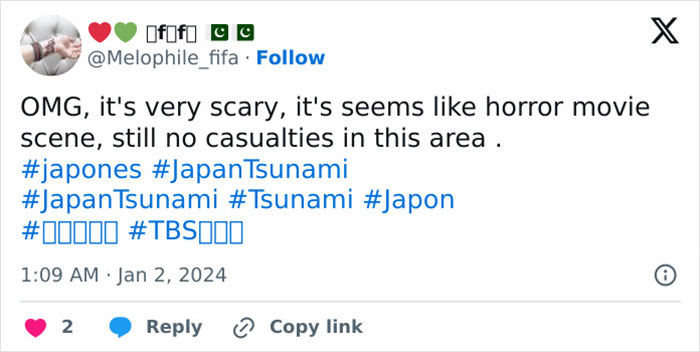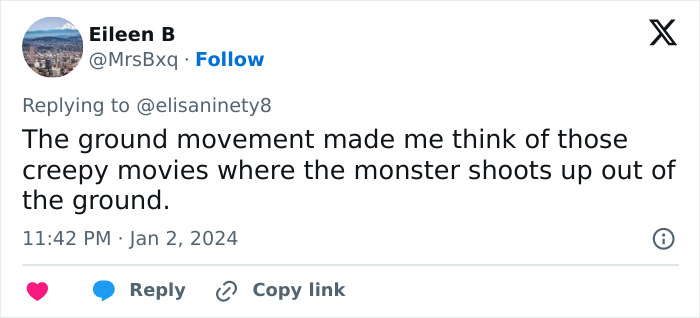A terrifying video taken by a hospital worker in Japan showed the concrete ground seemingly “breathing” up and down, amidst a 7.5 magnitude quake that took place on January 1, 2024.
A person took to their X account (formerly known as Twitter) to post a clip recorded during the earthquake, which showed the ground of a deserted street moving unusually.
The clip, which has gone viral, amassed 16.4 million views in two days and was accompanied by the following caption, which has been translated from Japanese into English: “It was really too scary. There is currently no damage from the tsunami and we are safe.
A terrifying video taken by a hospital worker in Japan showed the concrete ground seemingly “breathing” up and down, amidst a 7.5 magnitude earthquake
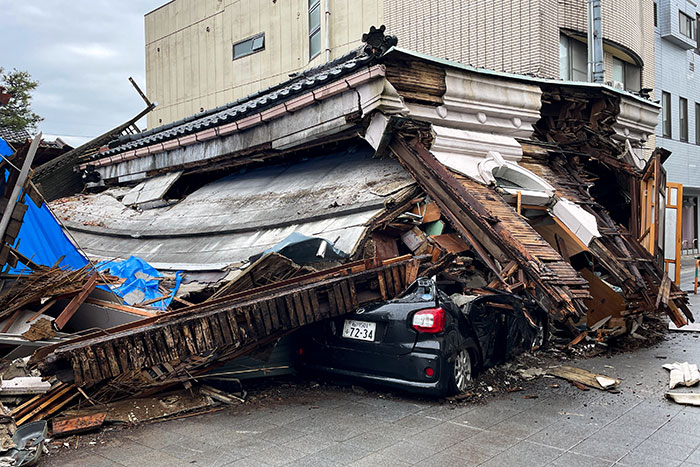
“On my way to work for the night shift, the ground began to shake violently, cracking open right in front of me, and I was terrified. There are not many places where you can evacuate.
“I have to go to work… After a while, I arrived at work. I was in a hurry to make the video, but I took it.”
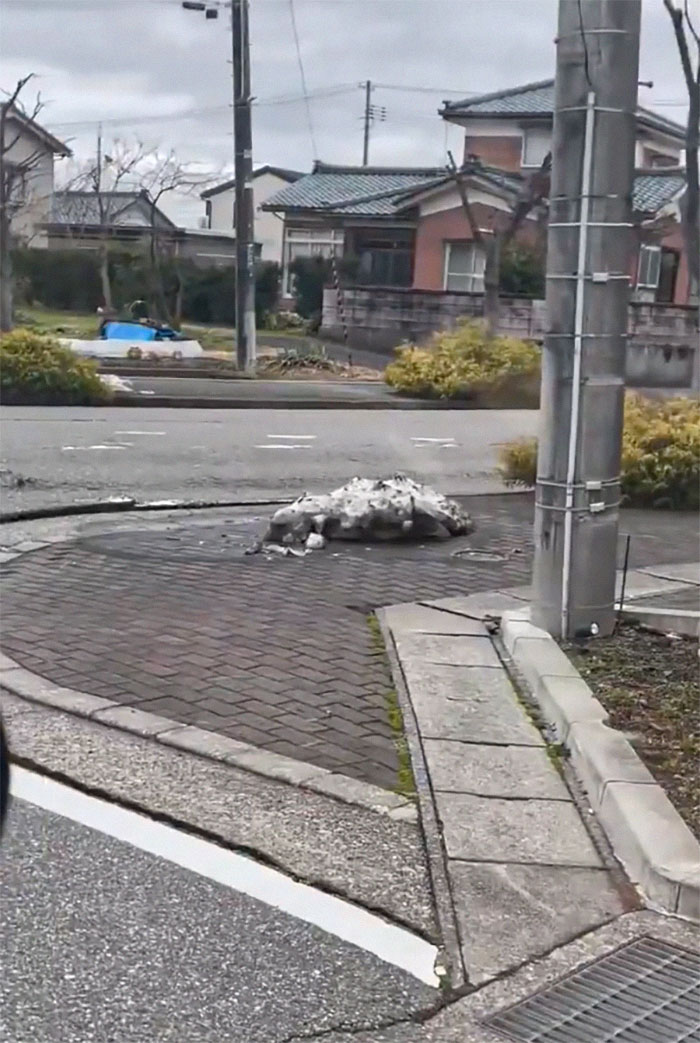
The scary clip garnered thousands of reactions online, as a person wrote while resharing the clip: “I’ve never experienced a large earthquake before, and there are many aspects that quite frankly terrify me even through video. Liquefaction being one of them. Fascinating? Yes. Scary? Also yes.”
According to the United States Geological Survey, liquefaction takes place when loosely packed, water-logged sediments at or near the ground surface lose their strength in response to strong ground shaking.
The video showed liquefaction, which happens when the ground surface lose its strength in response to strong ground shaking
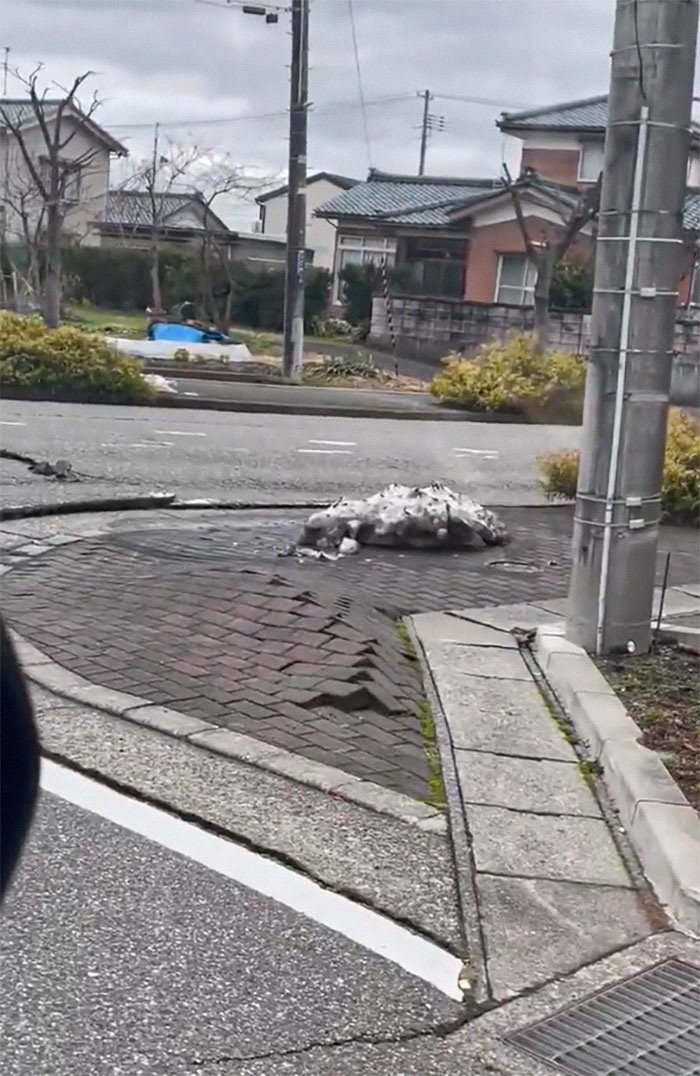
Watch the disturbing video below
もう本当に怖すぎました。
津波の被害は今のところは無く
無事です。
夜勤に向かう途中で
地面がすごい揺れだして、目の前で
割れたりして、恐怖しかなかったです。避難ができる場所もなかなか無いし、
仕事に行かなくちゃで、、
しばらくしてから職場に着きました。動画慌ててたけど撮った pic.twitter.com/ueidzjPWX9
— へっぽこみー🐻❄️無事です! (@mmmin726) January 1, 2024
Another X user remarked: “If you’ve ever lived through a +7 magnitude earthquake, you know it’s an experience. You can hear her speaking and almost sounds like she’s out of breath. That’s adrenaline.”
An additional individual chimed in: “It looks like the ground is breathing.”
The quake shook the Noto Peninsula in the central prefecture of Ishikawa on Monday (January 1) afternoon, collapsing buildings, sparking fires, and triggering tsunami alerts as far away as eastern Russia, CNN reported.
“On my way to work for the night shift, the ground began to shake violently, cracking open right in front of me,” the hospital worker described
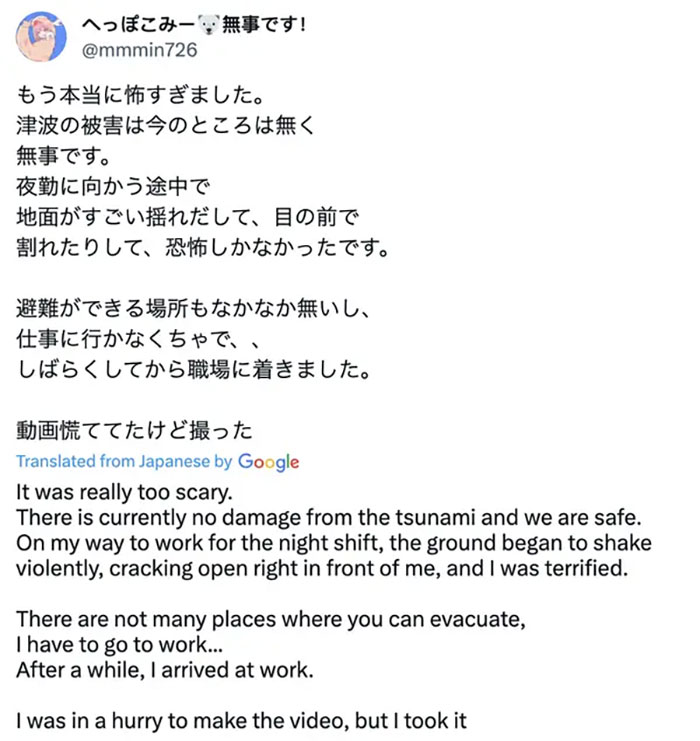
At least 57 people have been killed by the earthquake, according to Japanese public broadcaster NHK, citing officials from the Ishikawa prefecture.
Moreover, five people were killed at Tokyo Haneda airport on Tuesday (January 2) when a Japan Airlines jet collided with a coast guard plane on its way to provide earthquake relief, the American broadcaster reported.
Japan’s Meteorological Agency reportedly lifted all tsunami advisories along portions of the country’s western coast Tuesday, but more than 24 hours after the quake struck, there has been limited access to the northern part of the secluded Noto Peninsula.
The woman anticipated the “worst-case scenario” after witnessing the natural phenomenon from her vehicle
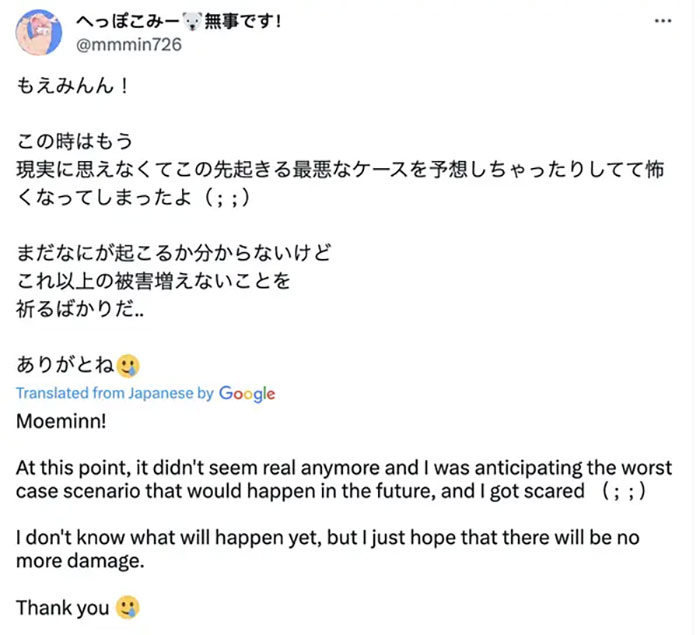
At least 57 people have been killed by the earthquake
Terrible situation in #Japan.#tsunami alert..#緊急地震速報 pic.twitter.com/GtFTBdMSON
— Mr Sinha (@MrSinha_) January 1, 2024
The central city of Wajima, home to more than 27,000 people, appeared to be among the worst hit. Wajima city officials told CNN that 15 people were confirmed dead there.
The city reportedly saw tsunami waves of around 1.2 meters (3.9 feet), according to NHK.
On Tuesday, the fire department in Wajima City reported that about 200 buildings were believed to have burned down on Asaichi Street, a popular tourist area in Wajima, in a fire that broke out Monday, NHK reported.
A 7.5 magnitude earthquake is considered a “major earthquake” which causes “serious damage”, according to Michigan Technological University’s Earthquake Magnitude Scale explainer.
When an earthquake reaches a magnitude of 8.0, it is considered “great”, and “can totally destroy communities near the epicenter”.
Many people agreed that the clip looked “very scary”


